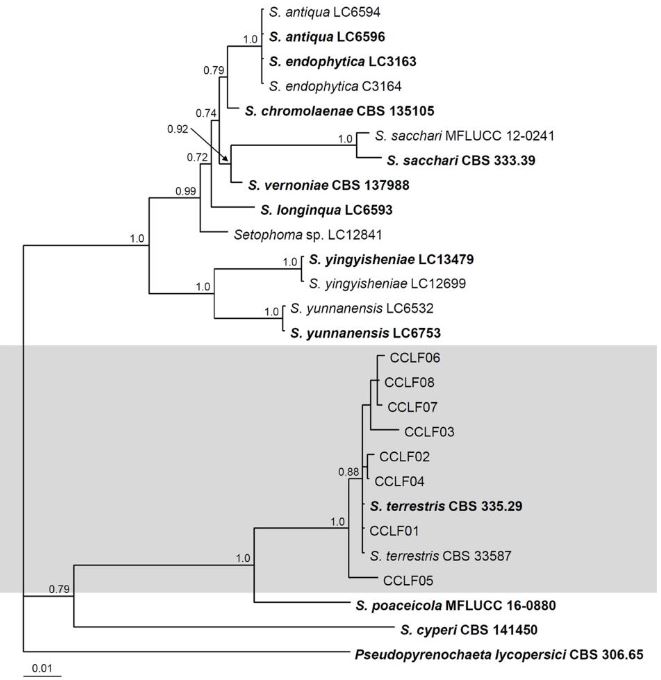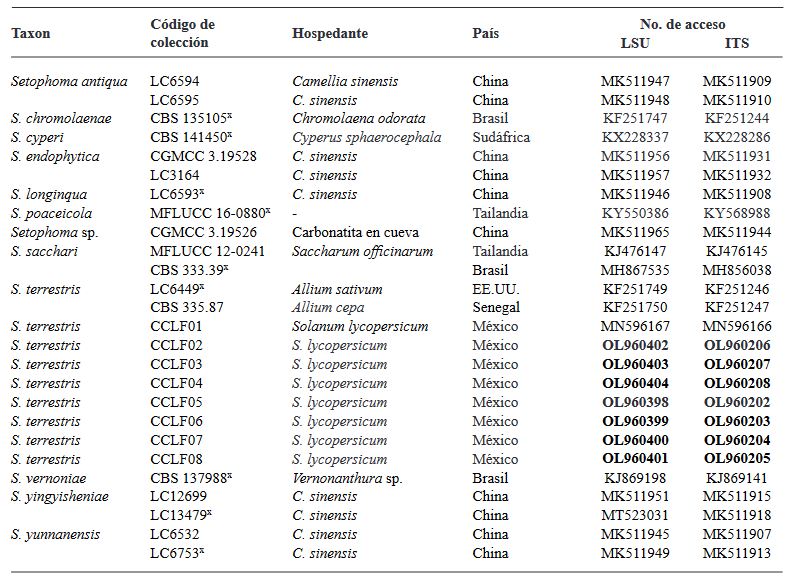Article filters
Search Papers
Morphological characterization, phylogeny and pathogenesis of Setophoma terrestris causing corky and pink roots of tomato (Solanum lycopersicum) in Sinaloa, Mexico
By Ana María López López, Juan Manuel Tovar Pedraza, Josefina León Félix, Raúl Allende Molar, Nelson Bernardi Lima, Isidro Márquez Zequera, Raymundo Saúl García Estrada*
* Corresponding Author. Email: - / Institution: Centro de Investigación en Alimentación y Desarrollo
Accepted: 28/January/2024 – Published: 13/February/2024 – DOI: https://doi.org/10.18781/R.MEX.FIT.2309-5
Abstract Background/Objective. Tomato (Solanum lycopersicum) is one of Mexico’s main crops. In the years 2017 and 2018, symptoms of corky and pink roots were observed with an incidence of 10 to 20% in Culiacan, Sinaloa, Mexico. In the foliage, plants presented a generalized chlorosis, with stunted growth and senescence in the leaves. In the roots, brown and pink lesions were formed, as well as a corky texture. The objective of this study was to morphologically and molecularly characterize fungal isolates associated to corky and pink root in tomato orchards in Culiacan, Sinaloa, as well as to evaluate their pathogenicity.
Materials and Methods. Monoconidial isolates were obtained and they were identified as Setophoma terrestris, based on their morphological characteristics. To confirm the identity, the area of the internal transcribed spacers (ITS) of the rDNA was amplified and sequenced, along with a fragment of the gene 28S of the rRNA (LSU).
Results. Using the sequences obtained, a phylogenetic tree was created using the Bayesian Inference and it was found that the sequences were grouped with the ex–type sequences of Setophoma terrestris. The pathogenicity of the isolates was verified by inoculating mycelial discs into the root of 10 one-month-old tomato seedlings. The roots of the seedlings inoculated with PDA discs without mycelium served as a control. Thirty days after inoculation, corky and pink root symptoms appeared, whereas the roots of control plants remained healthy
Conclusion. According to the morphological characterization, the molecular identification and the pathogenicity tests, Setophoma terrestris was confirmed to be the causal agent of corky and pink root in agricultural tomato orchards in Culiacan, Sinaloa.
Keywords: Setophoma, fungus, tomato, bayesian inference, root disease














